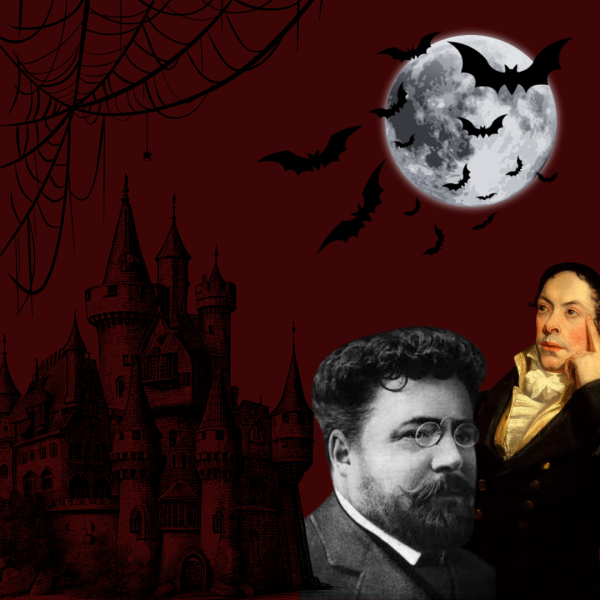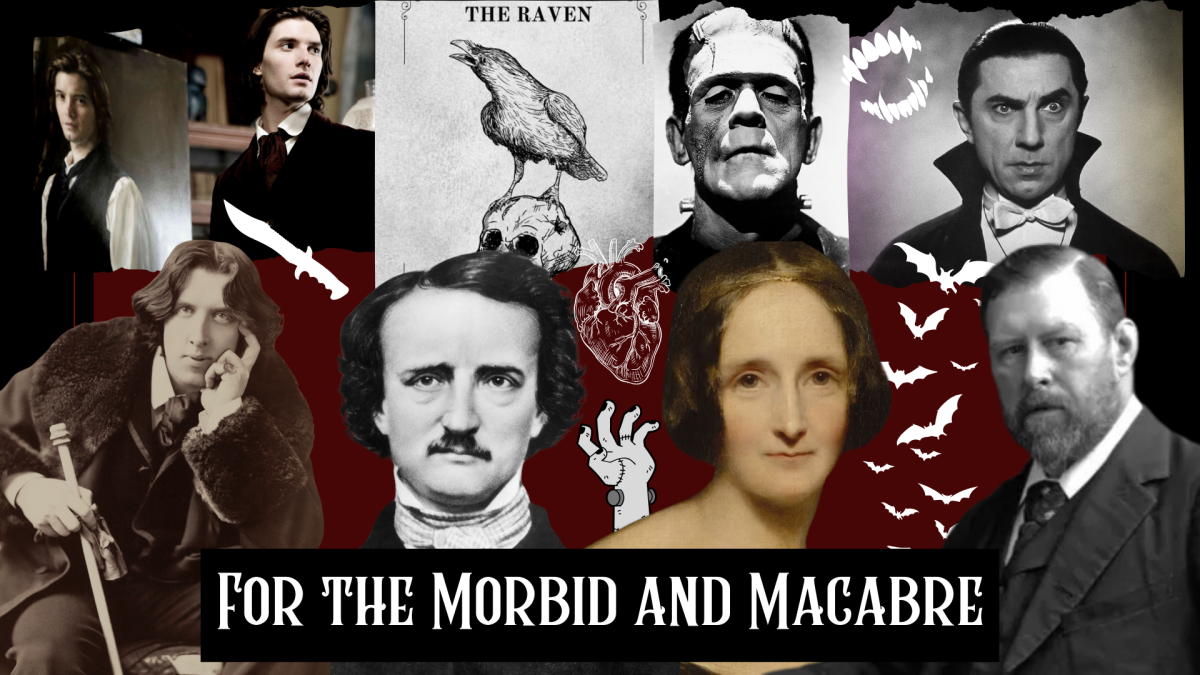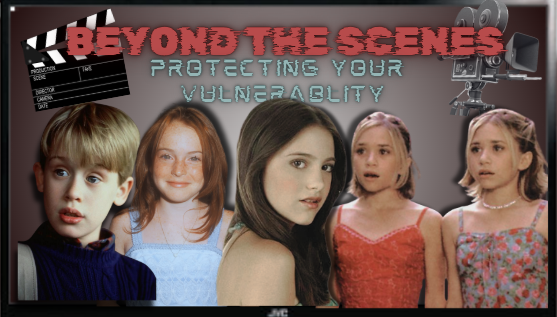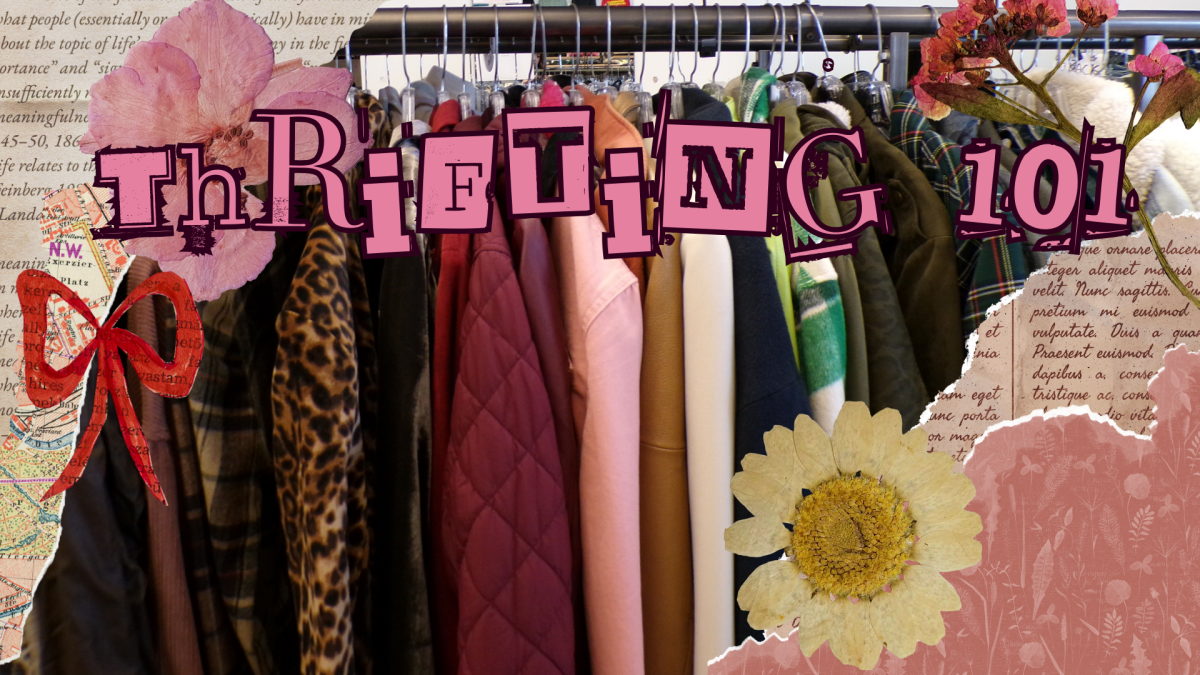In honor of AP Literature and Composition classes beginning their Gothic literature unit, what’s more perfect than writing about the genre of macabre, mystery, and morality?
Gothic literature is a literary genre that explores the dark side of human nature. Typically, Gothic stories take place in old houses, castles, or vaults – all containing an air of mystery and dread. Many of these stories rely on the supernatural, like Bram Stoker with “Dracula,” or they take advantage of an unreliable narrator to leave certain events unexplained. This can also be done to imply supernatural behavior without explicitly including it, like Edgar Allan Poe’s “The Cask of Amontillado.”
“I find beauty in the dark and macabre. It’s a really interesting subject and it tends to have a lot of passion without having an overly sweet tone to it,” said Sydney Ensign, a Huntington Beach High School (HBHS) junior and fan of the Gothic genre.

Arguably, the most distinguishing element of Gothic literature is its characters’ high-strung emotions. Think of the dramatic monologues of Dr. Frankenstein and his creature about the reality of life, the countless tears shed by Dorian Gray at the horrid thought of aging or the elaborate descriptions of the Phantom of the Opera’s pathetic romantic pursuits. An overwhelming intensity of feelings is what makes Gothic literature so alluring. Characters feel neutral about practically nothing—and if they do feel impartial to a topic, they are aggressively outspoken on their impartialness. The expressive nature of the genre allows readers to apply unrealistic situations to their own, much less theatrical life.
While many people love Gothic literature, even the most devoted fans find flaws within the genre. Claire Main, an HBHS English teacher who earned her Master’s in Gothic Studies, said, “My least favorite part of the genre is the common occurrence of the ‘damsel in distress.’ Most of the women of traditional Gothic literature had very little if any, independence or power.”
She goes on to explain how the women who were depicted as powerful were really only made strong by the supernatural or demonic forces that surrounded them. This can be seen in practically every classic Gothic novel – including previously mentioned “Frankenstein,” by Mary Shelley, “The Picture of Dorian Gray,” by Oscar Wilde, and “The Phantom of the Opera,” by Gaston Leroux, which all include women (to varying degrees) that have little to no power. Elizabeth Lavenza, Victor Frankenstein’s wife, is nothing more than a prop to aid the story along; Sybil Vane, Dorian Gray’s first love, is also just another tool for his own character development; Leroux’s Christine Daaé definitely plays a larger role than the previous girls, but she really isn’t as in charge as some might think (although, to be fair, all of the characters have a tough time navigating the chaotic plot).

Luckily, there are also countless Gothic tales that focus on their female characters. “Jane Eyre,” by Charlotte Brontë, contains the common themes of morality, love, and self-discovery that most books in the genre have. However, instead of depicting these struggles as male characters dealing with both internal and external conflicts, Brontë gives her readers a fresh female perspective on dealing with these issues. “Carmilla,” by J. Sheridan Le Fanu, is also a fabulous novella that centers around women, their relationships, morality (shocking), and vampires. While many Gothic stories may push women to the side, there are still so many others that shine a light on the complexities of womanhood.
Others may find that Gothic literature is too disturbing or weird in comparison to other, lighter genres. However, that is the whole point. As Anika Longheyer, a freshman at HBHS, said, “I think it interests me because you’re able to see more of a contrast in the literature. I kind of like that it shows darker aspects, and then you can take away from them, and it shows lighter ones.”
If you’re gift shopping for your friend who purely reads light-hearted rom-coms, would it be a great idea to buy them a copy of “The Monk: A Romance,” by Matthew Gregory Lewis, a Gothic story about the moral downfall of a monk? No! But if you’re gift shopping for your friend who enjoys reading about people being terrorized by an alluring creature of the night, is it a fabulous idea to buy them a copy of “Dracula,” by Bram Stoker? Absolutely! If a reader doesn’t want to read a twisting tale that delves into the ethics of morality, typically containing some disturbing imagery, then they are not going to enjoy a Gothic novel.
The good thing about Gothic literature is that it comes in many forms. Some prefer Gothic romance to Gothic horror. Some enjoy classic Gothic novels in comparison to the more modern Gothic books. There’s a place for everyone in Gothic literature, truly. Well, as long as you’re okay with shadows, bits of angst, and the possibility of blood.








